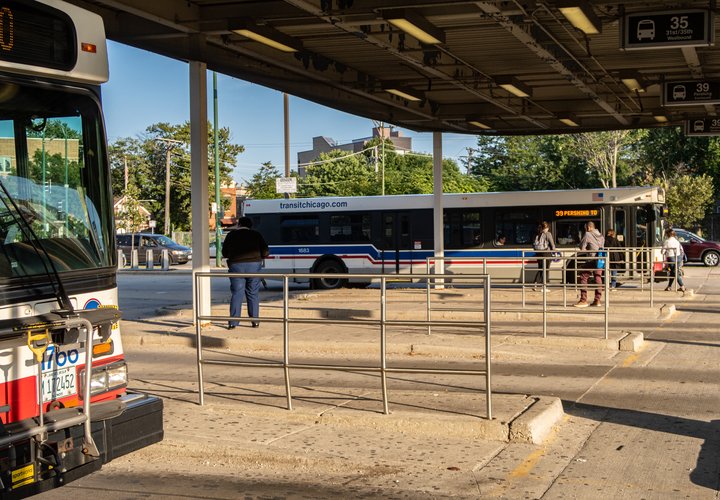Did You Know?
More steps needed for safe, convenient bus service

Since March, the Active Trans Bus Organizing Fellows have been conducting online surveys with essential workers from historically marginalized communities who depend on public transit to get to their jobs. The survey examines the demographics of these workers, the condition of the buses, and the speed and reliability of the routes they take. This is one of a series of articles sharing the results of these surveys.
To keep COVID-19 from spreading among CTA passengers and staff, the transit agency has been changing the way it operates during the pandemic. Buses in particular have some new procedures designed to prevent the spread of the disease.
Some of the more visible changes are:
- Requiring rear door boarding for all riders except for people who need to use the front door ramp.
- Restricting close contact with bus operators by roping off the front of the bus.
- Regulating number of riders on a bus.
While these changes are necessary adjustments CTA has made to help protect riders and employees, many riders feel that more changes are needed. To get a better understanding of the challenges that riders are faced with and ways that CTA can make riders’ experiences safer and more convenient, I’ve been speaking with essential workers who have taken our COVID-19 transit survey.
One person I spoke with is Danell Williams. She’s an essential worker who works downtown, and 5 days a week she boards the #65 bus from Belmont Cragin at Laramie Ave. and starts her hour-long journey. Danell said she appreciated the continued availability of bus service during the pandemic because it is a cheaper option for her versus ride hailing. However, she’s been troubled by the slow speed of her bus during the pandemic. Normally, her bus route is slow, but during the pandemic her bus has been traveling even slower. Traveling at slower speeds and idling at certain stops for a few minutes at a time has caused her to be late for work.
As a result, Danell now pays for ride hailing a few times per week, which gets her to work faster. While Danell understands that buses often go slower to remain on schedule and to eliminate bus bunching, but she said she wishes the CTA would find a way to keep her bus moving at a steady, faster pace.
To encourage riders to keep their distance from one another, Danell said there are a few signs promoting social distancing on the buses, but she says the CTA could do better by helping riders understand what 6 feet of distancing looks like visually. Danell believes there can be a more direct and intentional approach to encouraging distancing practices, like what convenience stores and supermarkets do by marking the floor. In addition to social distancing markers, Danell expressed the need for hand sanitizing dispensers on the buses. She resides in a neighborhood that has seen 2,082 confirmed cases of COVID-19 and would feel safer if CTA considers this extra safety measure.
Based on Danell’s experiences, here are more steps that CTA should consider for improving service during the pandemic:
- Provide express buses during peak hours for essential workers or run more buses on a route if the bus must skip stops due to maximum occupancy requirements.
- Consider blocking seats off to create 6 feet of distance so that riders make better decisions on where they chose to sit or stand.
- Install hand sanitizer dispensers on operating buses, especially in neighborhoods with high number of confirmed cases.
The CTA has made important adjustments during the pandemic, but riders like Danell will continue to opt for ride hailing if she does not see improvements on her route to the Loop. The CTA must continue to assess on a neighborhood level how they are approaching distancing, cleanliness, and communication during the pandemic in order to better serve essential workers that reside in some of the most impacted neighborhoods throughout Chicago.
Make a Donation
Your tax-deductible donation supports the important work that Active Trans does throughout the region
